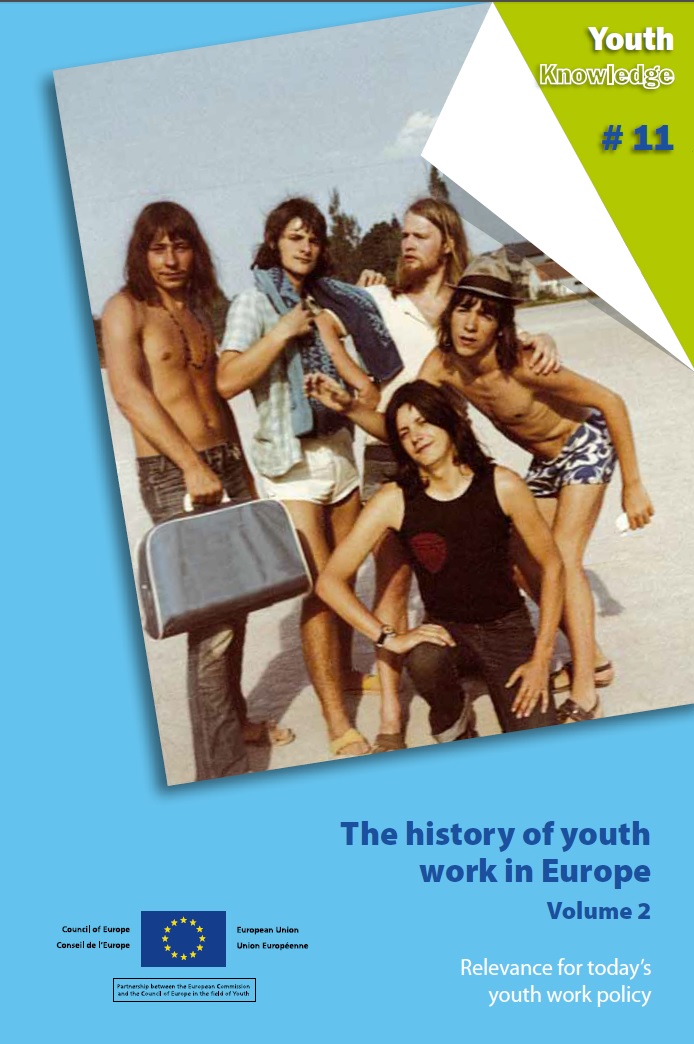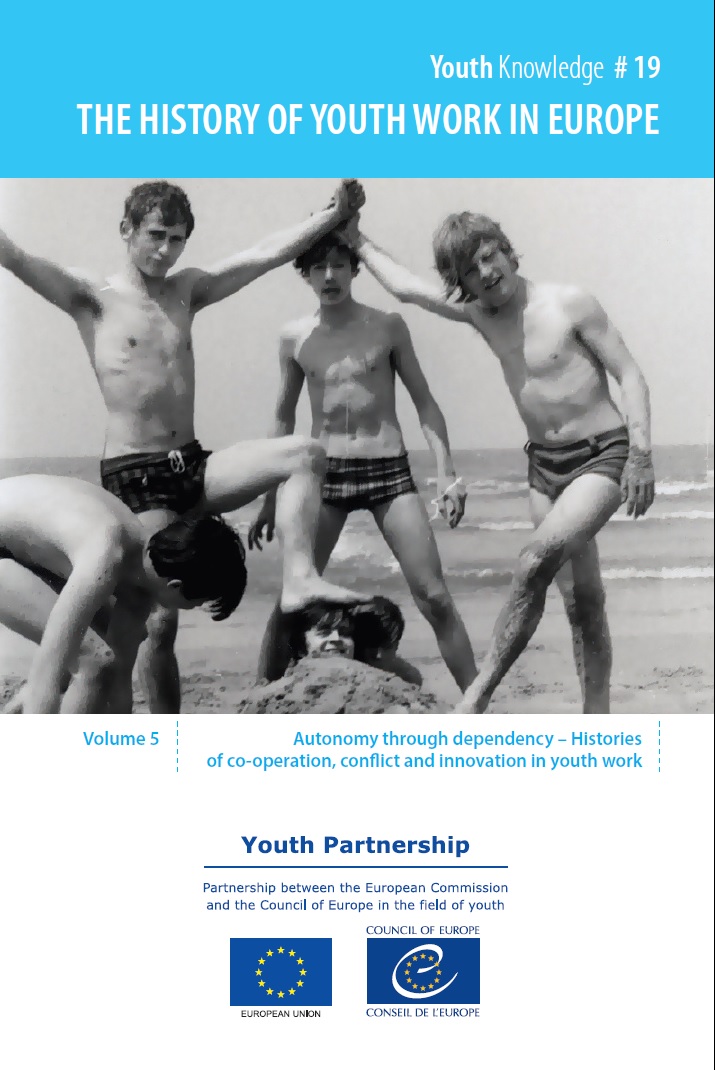The history of youth work in Europe - Volume 2. Relevance for today's youth work policy

Edited by Filip Coussée, Griet Verschelden, Tineke Van de Walle, Marta Mędlińska and Howard Williamson
Council of Europe, September 2010. ISBN 978-92-871-6824-5
Youth work starts where young people are. It is perhaps this general principle that seems to create a certain 'myopic view' in youth work practice, policy and research. We tend to concentrate on the questions of today and take them as a starting point for our future plans. This sometimes makes youth work an uncertain and fragile practice. The lack of historical consciousness makes youth work vulnerable to instrumentalisation, whether by policymakers or even by young people themselves, claiming youth work should fulfil the needs they define to be urgent and relevant.
Youth work is a contingent practice and history will not reveal to us its one and only real identity. Knowing where we come from, however, is an important step in establishing a confident, though not arrogant, identity. Youth work is a social and pedagogical practice that must be adapted to very diverse historical, geographic and social contexts, but there are still some underlying, basic assumptions that have structured practices and policies to date and continue to do so. In this light, a cross-cultural and transnational perspective can be most enlightening.
This second volume of The history of youth work in Europe, presents the youth work histories of some very different countries: Belgium and its three communities, the Netherlands, Ireland, Wales and Hungary. The reader is also introduced to the history of the relatively young European youth policies, and is even given a glimpse beyond European borders with a history of youth work in South Africa.

Lasse Siurala, Filip Coussée, Leena Suurpaa and Howard Williamson (eds.)
Council of Europe, 2016. 978-92-871-8161-9
The “History of youth work in Europe” series aims to achieve better understanding of current challenges in youth work and youth policy. Volume 5 addresses questions like: How have government policies and administrative practices during the past decades affected youth work? What kind of strategies has youth work developed to react to them and to create a positive space for work with young people? Can educational approaches of youth work, like social pedagogy, help mediate between young people in their ever-changing lives and society? Co-operation between youth policy, youth research and youth work has been called “the Magic Triangle” – but is the magic still there?
This publication discusses these and other topics from a variety of perspectives. The authors come not only from Europe, but also from the USA, Australia and South Africa, providing a refreshing comparative reflection on youth work issues and opportunities, which is revealed to be global in nature. They also have diverse and varied backgrounds in youth research, youth work, youth policy making and youth worker training. This comparative historical perspective puts some of the pieces of the “youth work puzzle” together, while many are left unconnected. It also becomes apparent that there is an element on randomness in the historical development of youth work. Many structures, policies, approaches and methods are not “historically necessary”. Rather, many things could have come out differently. This volume on the history of youth work provides many readings: it provides a rich collection of national youth histories to complement and build upon the four earlier volumes, and histories and analyses of youth work for readers to compare with their own experience, sharpen their critical view and inspire their thinking.
